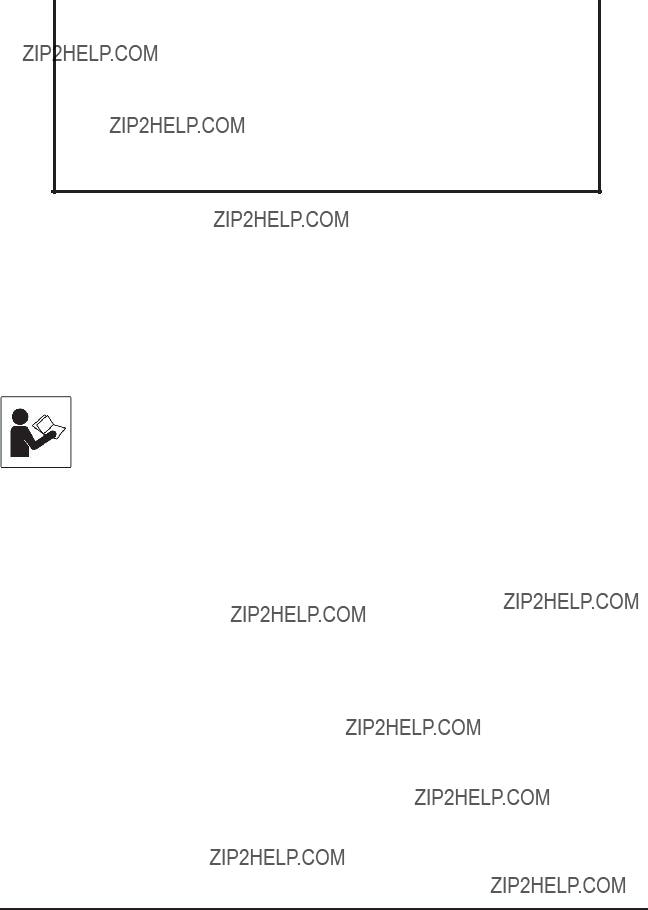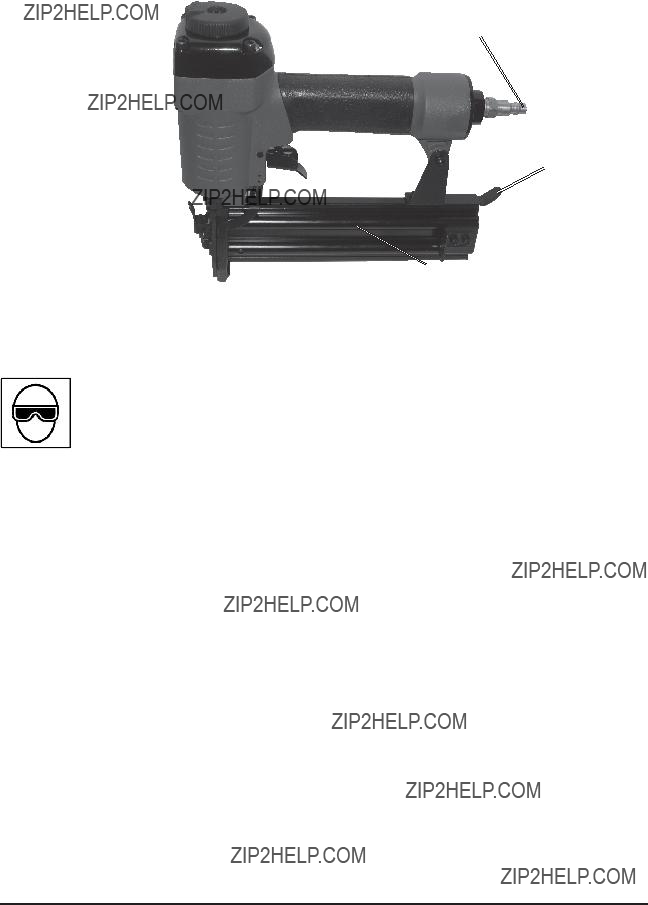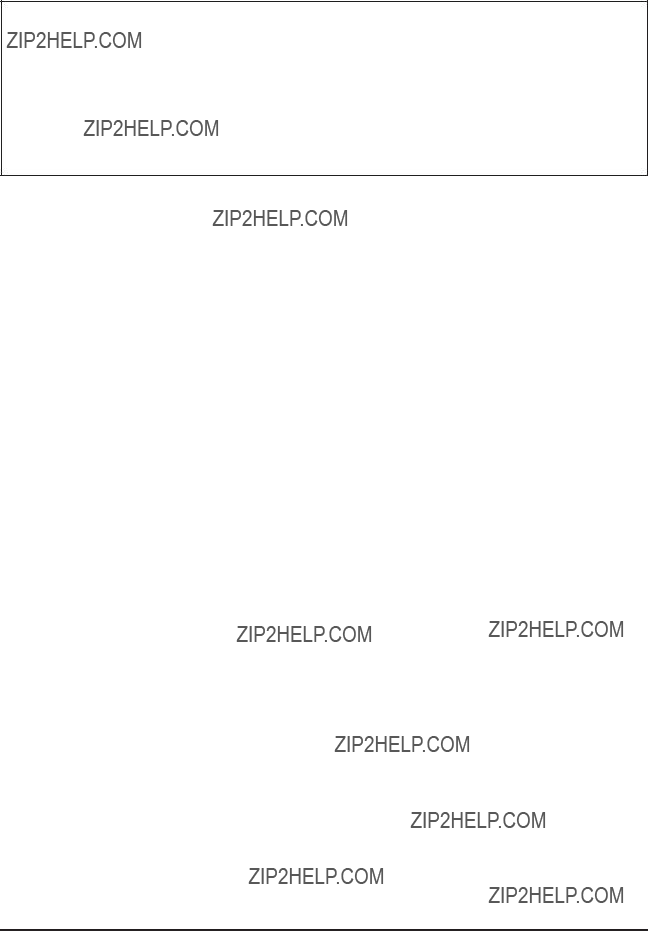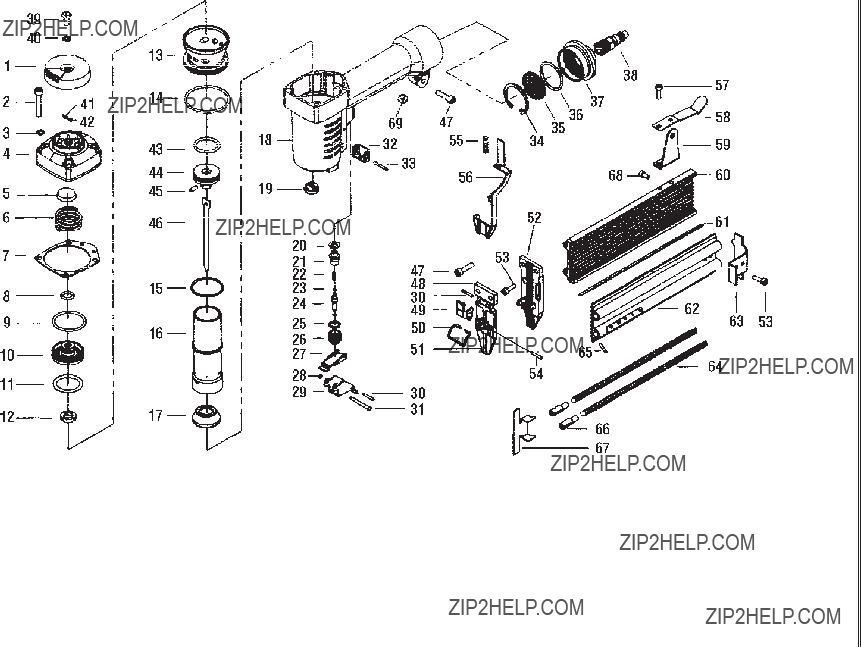panel fuse to break. If this happens, either use the compressor without an extension cord or find a larger amperage circuit to use.
19.Maintenance. The maintenance outlined in the maintenance section should be performed regularly. For your safety, this product should be serviced or repaired regularly only by a qualified technician.
20.Compressed air only. Never use combustible gas as a power source.
21.Do not load nails with the trigger or safety depressed. Unintentional firing may occur. Do not load nails when the air hose is connected to the tool. Always assume that the tool contains fasteners.
22.Disconnect air supply before loading Nailer. Before reloading (or making any adjustments to) the Nailer make sure that the compressed air is disconnected.
23.Fire fasteners into an appropriate work surface only. Do not attempt to fire fasteners into surfaces too hard to penetrate. Do not drive fasteners on top of other fasteners, or at too steep of an angle. Fasteners can ricochet causing personal injury. Never fire the Nailer into the air, or point it toward yourself or another person. Always wear ANSI approved safety goggles during use, maintenance, and reloading.
24.Do not fire fasteners too close to the edge of a workpiece. They may split the workpiece and fly free, causing personal injury.
25.Take caution as some woods contain preservatives such as copper chromium arsenate (CCA) which can be toxic. When stapling or nailing these materials extra care should be taken to avoid inhalation and minimize skin contact.
WARNING: Some dust created by power sanding, sawing, grinding, drilling, and other construction activities, contain chemicals known [to the State of California] to cause cancer, birth defects or other reproductive harm.
Some examples of these chemicals are:
???Lead from lead-based paints
???Crystalline silica from bricks and cement or other masonry products
???Arsenic and chromium from chemically treated lumber
(California Health & Safety Code ?? 25249.5, et seq. )
26.Stay within air pressure capacity. Never operate the Nailer above 95 PSI.
27.Hold tool away from head and body. During operation the Nailer may kick back causing injury.
28.Transport Nailer safely. Always disconnect air supply when moving the tool in the workplace. Carry the tool by the handle and avoid contact with the trigger.
Note: Performance of the compressor (if powered by line voltage) may vary depending on variations in local line voltage. Extension cord usage may also affect tool performance.
Warning:The warnings, cautions, and instructions discussed in this instruction manual cannot cover all possible conditions and situations that may occur. It must be understood by the operator that common sense and caution are factors which cannot be built into this product, but must be supplied by the operator.






 Trigger (29)
Trigger (29)



